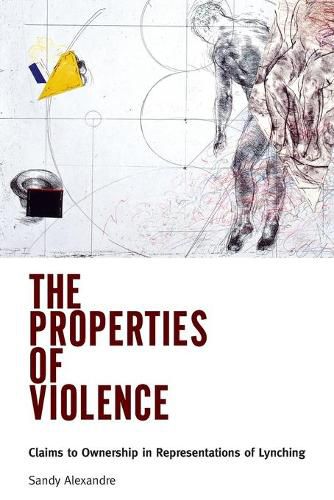Readings Newsletter
Become a Readings Member to make your shopping experience even easier.
Sign in or sign up for free!
You’re not far away from qualifying for FREE standard shipping within Australia
You’ve qualified for FREE standard shipping within Australia
The cart is loading…






This title is printed to order. This book may have been self-published. If so, we cannot guarantee the quality of the content. In the main most books will have gone through the editing process however some may not. We therefore suggest that you be aware of this before ordering this book. If in doubt check either the author or publisher’s details as we are unable to accept any returns unless they are faulty. Please contact us if you have any questions.
The Properties of Violence focuses on two connected issues: representations of lynching in late-nineteenth and twentieth-century American photographs, poetry, and fiction; and the effects of those representations. Alexandre compellingly shows how putting representations of lynching in dialogue with the history of lynching uncovers the profound investment of African American literature - as an enterprise that continually seeks to create conceptual spaces for the disenfranchised culture it represents - in matters of property and territory. Through studies ranging from lynching photographs to Toni Morrison’s Pulitzer Prize-winning novel, Beloved, the book demonstrates how representations of lynching demand that we engage and discuss various forms of possession and dispossession.
The multiple meanings of the word representation are familiar to literary critics, but Alexandre’s book insists that its other key term, effects , also needs to be understood in both of its primary senses. On the one hand, it indicates the social and cultural repercussions of how lynching was portrayed, namely, what effects its representations had. On the other hand, the word signals, too, the possessions or what we might call the personal effects conjured up by these representations. These possessions were not only material - as for example property in land or the things one owned. The effects of representation also included diverse, less tangible but no less real possessions shared by individuals and groups: the aura of a lynching site, the ideological construction of white womanhood, or the seemingly default capacity of lynching iconography to encapsulate the history of ostensibly all forms of violence against black people.
$9.00 standard shipping within Australia
FREE standard shipping within Australia for orders over $100.00
Express & International shipping calculated at checkout
This title is printed to order. This book may have been self-published. If so, we cannot guarantee the quality of the content. In the main most books will have gone through the editing process however some may not. We therefore suggest that you be aware of this before ordering this book. If in doubt check either the author or publisher’s details as we are unable to accept any returns unless they are faulty. Please contact us if you have any questions.
The Properties of Violence focuses on two connected issues: representations of lynching in late-nineteenth and twentieth-century American photographs, poetry, and fiction; and the effects of those representations. Alexandre compellingly shows how putting representations of lynching in dialogue with the history of lynching uncovers the profound investment of African American literature - as an enterprise that continually seeks to create conceptual spaces for the disenfranchised culture it represents - in matters of property and territory. Through studies ranging from lynching photographs to Toni Morrison’s Pulitzer Prize-winning novel, Beloved, the book demonstrates how representations of lynching demand that we engage and discuss various forms of possession and dispossession.
The multiple meanings of the word representation are familiar to literary critics, but Alexandre’s book insists that its other key term, effects , also needs to be understood in both of its primary senses. On the one hand, it indicates the social and cultural repercussions of how lynching was portrayed, namely, what effects its representations had. On the other hand, the word signals, too, the possessions or what we might call the personal effects conjured up by these representations. These possessions were not only material - as for example property in land or the things one owned. The effects of representation also included diverse, less tangible but no less real possessions shared by individuals and groups: the aura of a lynching site, the ideological construction of white womanhood, or the seemingly default capacity of lynching iconography to encapsulate the history of ostensibly all forms of violence against black people.